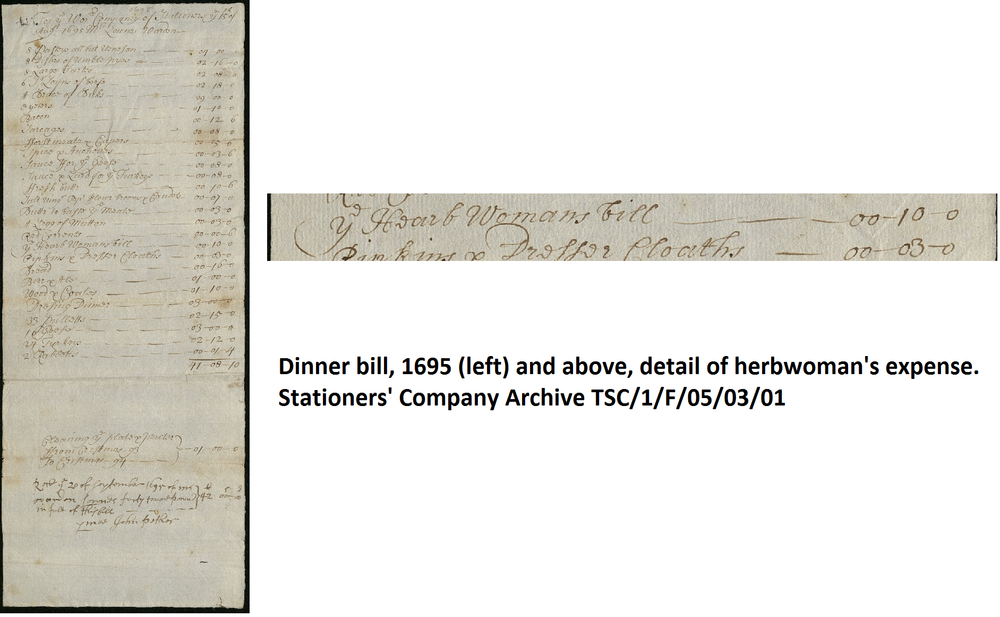THE DOMESTIC HERBAL
12 JUNE 2020

Liveryman Margaret Willes's new book The Domestic Herbal comes out this month. Being something of an expert on the subject, Margaret explained to me how herbs were used at Stationers' Hall in the seventeenth-century - and why the hiring of a herbwoman was considered a crucial expense for any banquet.
In archival research, the briefest references can often yield the most rewarding insights. The things that people take for granted – a casual phrase in a letter, some terminology deemed too commonplace to explain – highlight how vastly different our society is now from what it once was (and, perhaps, from what it might come to be). And because yesterday’s assumptions can make yesterday’s language seem opaque, when trying to make sense of archival documents, we need our historians to explain what we’re looking at.
As archivist to the Stationers’ Company, I’m especially lucky in having a large pool of expertise to draw on when I find myself perplexed by our records. Our former archivist Robin Myers continues to be extraordinarily generous with her extensive knowledge of the archive, and our members include scholars of just about every historical period and specialism covered by our records. Having a ready-made community to consult is a huge advantage to me when working to make our archive accessible to more researchers and visitors.
It was while looking for suitable material for a presentation that I first came across a reference that puzzled me. There, in a dinner bill for the Stationers’ Venison Feast of 1695, was itemised the expense of ‘ye hearb woman’s bill’.

I might have let it pass had I not then found a similar reference in a similar bill from 1700.

As the herbwoman kept turning up in the dinner accounts, and commanding a not insubstantial fee each time, I needed to find out more. And I knew straight away who to ask.
Liveryman Margaret Willes is a social historian with a special interest in all things botanical. I’d come across her work in previous archival jobs at Shakespeare’s Globe and the Garden Museum, and have been delighted to find her in person every bit as erudite and entertaining as her writing. Margaret enthusiastically took up my questions about the mysterious herb woman, and explained that the herbs were not just used for cooking, but would be strewn about the dining-hall, masking what would no doubt have been a heady mixture of pungent body odours, and repelling insects and vermin. Different herbs targeted different pests, with mice apparently having an inexplicably strong aversion to mint. I’m happy to say that my question was of particular interest to her at the time because it tied in with the book she was working on, The Domestic Herbal: Plants for the Home in the Seventeenth Century.

The book is due for publication later this month, and is available to pre-order at all of the usual outlets.
Margaret will be talking about the herb woman, and other ceremonial traditions of the Stationers’ Company, in our virtual Archive Evening on the 13th of July – keep an eye on our website for details of how to register!